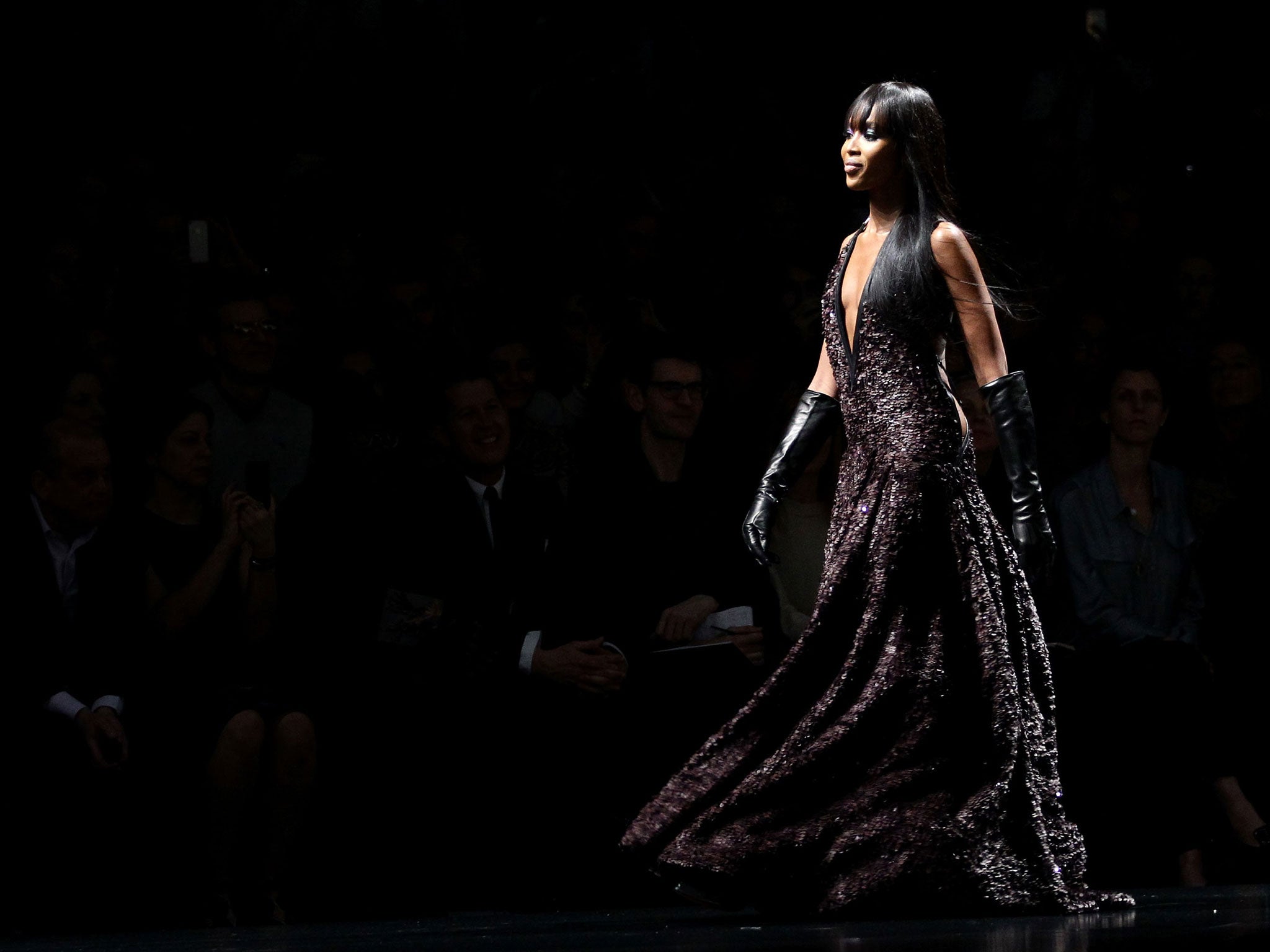Naomi Campbell is right - white is still the fashion industry's favourite colour
You can tell a lot about a society from the way it selects its most beautiful women

Racial diversity at catwalk shows, like the projectile potential of mobile phones, is a topic on which Naomi Campbell is uniquely well-placed to speak. She has spent nearly 30 years as one of the industry’s few brown faces and unless casting agents and designers buck up their ideas, this situation is unlikely to change. “We’re not calling them racist, we are saying the act [of not choosing models of colour] is racist,” she told Channel 4 News on Monday. “When I started modelling, there was a great balance of models and colour.”
If your interest in fashion begins and ends in the casual shirts section of Marks & Spencer, you may struggle to see how such London Fashion Week goings-on are relevant. In fact, this is an issue with implications far beyond the front row. You can tell a lot about a society from the way it selects its most beautiful women.
Take Nina Davuluri. The new Miss America has the same toothy smile as her fellow beauty pageant contestants, the same slim figure and, seeing as she was born in New York state, the same American passport. Yet when Indian-American Davuluri was crowned an ideal of feminine beauty earlier this week, she ceased to be just another pretty girl and became – in some people’s minds at least – a threat to both national identity and national security. One aghast Twitter user wrote, “9/11 was 4 days ago and she gets Miss America?” Another asked “WHEN WILL A WHITE WOMAN WIN #MISSAMERICA? Ever??!!!” The answer to this, incidentally, is almost every year of the competition’s 92-year history, apart from the eight times an African-American women has won since 1980 and Davuluri’s own win, this year. For the first 35 years, all non-white women were barred from entry.
A few twits with zero understanding of geography, history or spelling don’t represent mainstream views, but their shock does illustrate how rare it is for a brown face to be cast as a mainstream beauty ideal. Nor is it true, as is sometimes suggested, that failing to include black and Asian models merely reflects the demographics of the market. At New York Fashion Week around 83 per cent of the models were white. This compares to a US population that is about 64 per cent white, and New York City population that is about 45 per cent white.
Of course, fashion people aren’t in the business of representing the world as it really is, they are in the business of creating a fantasy version of the consumer as he or she would like to be. This lofty goal is sometimes used as a sort of Get Out of PC Jail Free card, excusing the industry from its social responsibilities. It doesn’t. The fantasies that the fashion industry creates are not just fantasies, but the basis for a widely disseminated, brutally effective beauty ideal, so their responsibility only weighs heavier. Living up to this responsibility will mean change, but so what? It doesn’t say much for this supposedly cutting-edge creative industry if that’s an ask too far.
Join our commenting forum
Join thought-provoking conversations, follow other Independent readers and see their replies
Comments